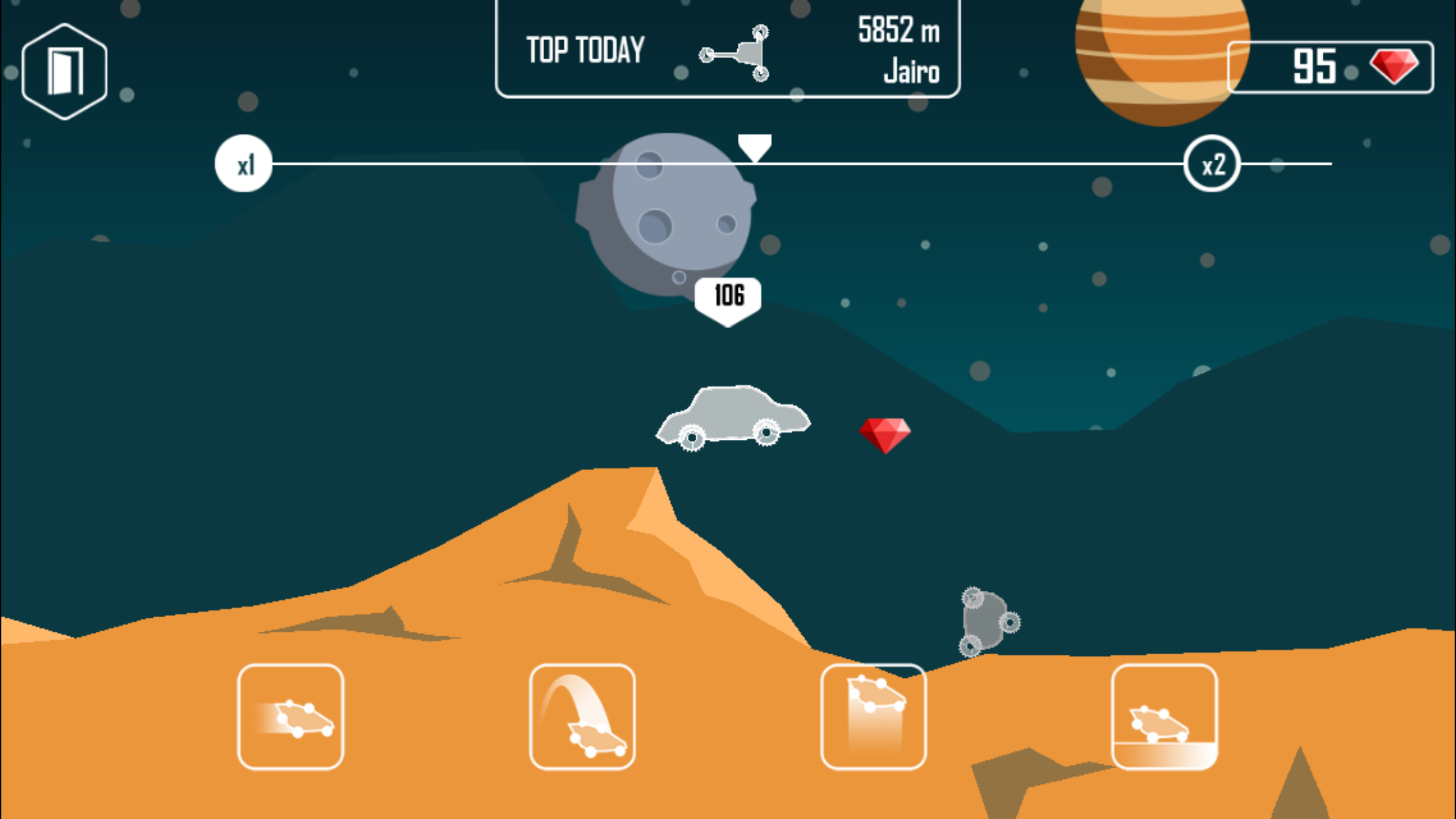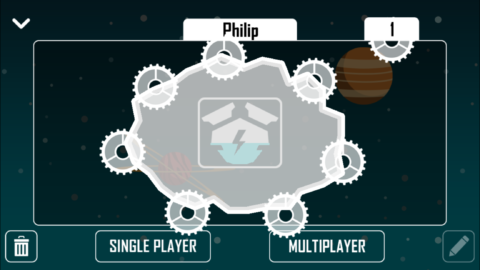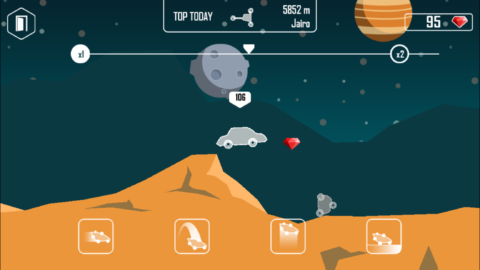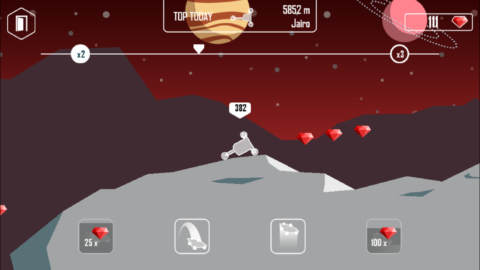Design your own moon rover in this simple game of drawing and driving
Price: Free (+optional IAP)
Version: 1.0.1
Size: 46.1 MB
Platform: iPhone / iPad
Developer: Tiny Games
Lunar Explorer is a game that simplifies the complex process of space engineering down to a few quick taps and swipes. About time. It tasks you with designing a lunar rover and then watching as your hand-drawn vehicle traverses an endless landscape of rocks and craters.
You can build up to five distinct lunar rovers, and the design process is refreshingly simple. Each vehicle starts as a floating engine, and your job is to draw an unbroken line around it in any shape you like. Your rover can be conventionally car-shaped or slick and futuristic; it can be a jarring mess of random spikes or completely round. And before you ask – yes, the game will let you draw a giant phallus on wheels if you should feel so inclined. (It drives surprisingly well, or so we heard.)
Once you settle on a shape, it’s time to drag and drop wheels wherever they fit best around your rover’s scribbled body. Up to eight wheels can be used, but each one added lowers the power of the craft considerably. Part of the challenge is finding the sweet spot between balance and speed. Do you put wheels on every side for ultimate stability or stick to just two and pray your rover doesn’t get flipped onto its back like a helpless turtle?
So what happens once you’ve drawn (and named) your lunar rover? Well, then begins the conventional game part of the game, which plays out like an endless auto-runner. On a randomly generated 2D landscape, your rover will trudge automatically onwards over the angular landscape. You can tap the screen to brake, though for the most part it’s safe to just let the game play itself. The challenge is for your creation to travel as far as possible before getting stuck – the run is over if no significant progress is made for several seconds.
With the rover driving itself, your job becomes crisis aversion, using four rover-boosting power-ups in a timely manner to leap over craters or scale particularly steep hills. With great power-ups comes great responsibility, though, as each of the skills takes time to recharge after use. You can’t get too trigger-happy with the jumps and speed boosts or you’ll be stuck in a bind with no way out. That said, one extra life of sorts is available in freemium form – you can watch a video ad to carry on with powers replenished, but this can only be done once per run.
There are more freemium tricks here, with collectable gems able to instantly recharge your power-ups mid-run. This comes at a real cost, though, with gems thin on the ground and recharges pricey. Lunar Explorer is free to download, and it’s easy to avoid the in-app purchases if you don’t mind the limitations of playing without gems. But it does feel like a shame that the players topping the global high scores almost certainly had help from the IAP to get there.
It’s hardly rocket science, we know, but experimenting with different shapes and iterating through rover designs is a deeply satisfying science. Etching a design and watching it come to life is a great feeling – when your hand-drawn rover successfully makes it across a ravine or over a craggy patch of land, it’s hard not to feel a tingle of pride. Attaboy! And that’s not to mention the compelling multiplayer mode in which you race other players’ creations in order to earn trophies.
Our only real concern is that there’s not much complexity to the design process, and the actual driving part of the game is slow and fairly passive. However, if you like to tinker and you like to compete on the world stage, you could find a lot to love in Lunar Explorer.




